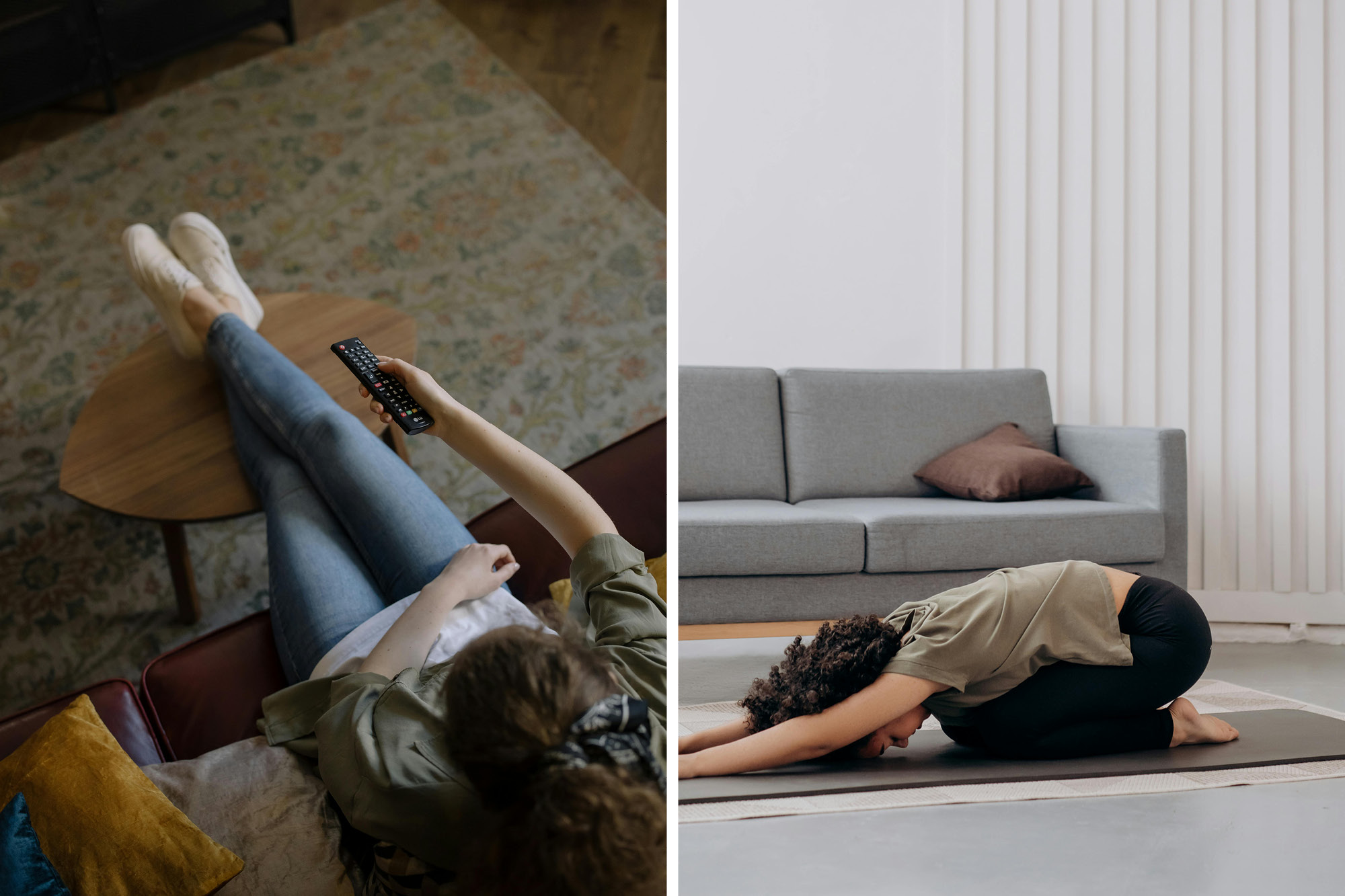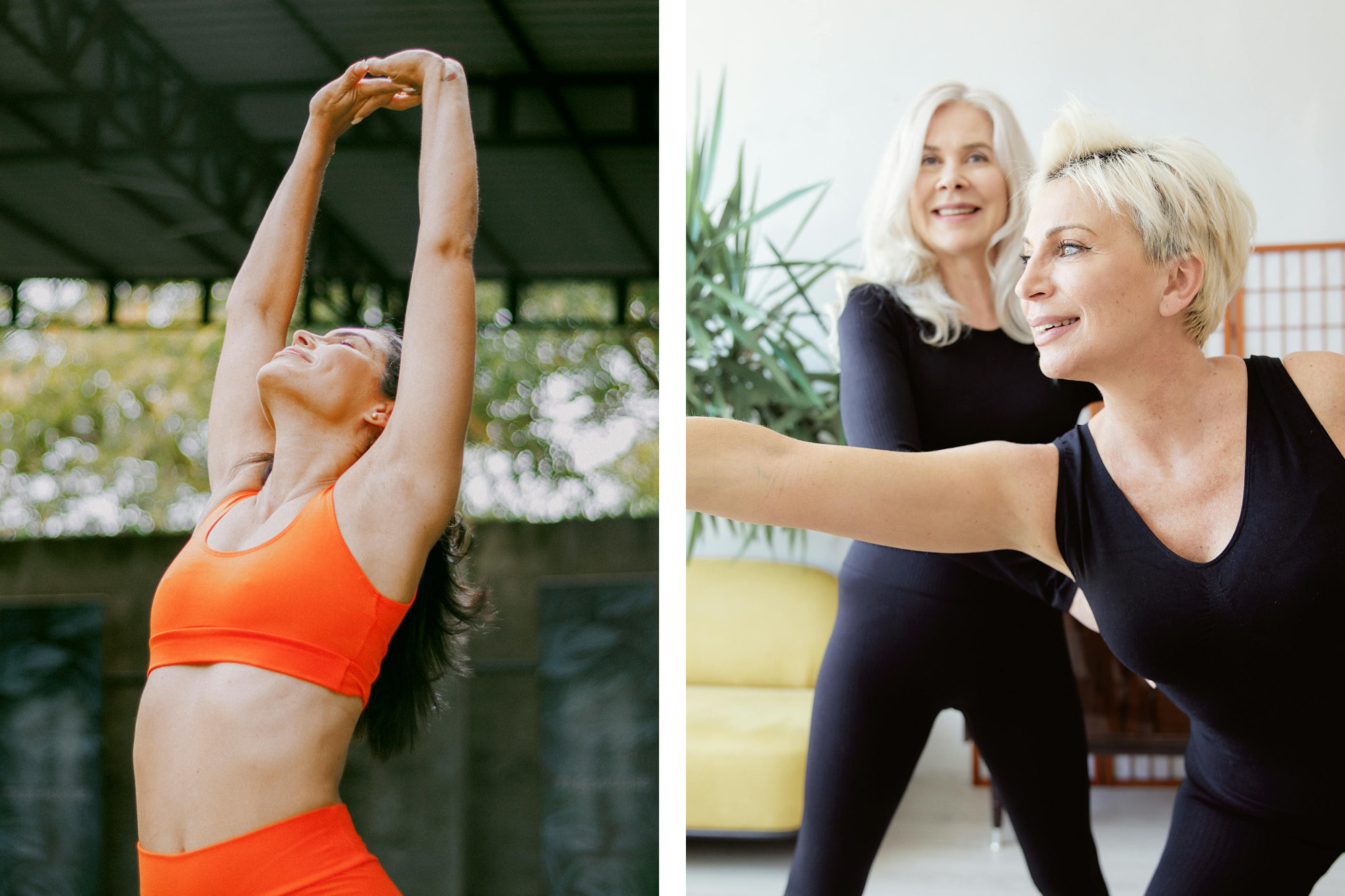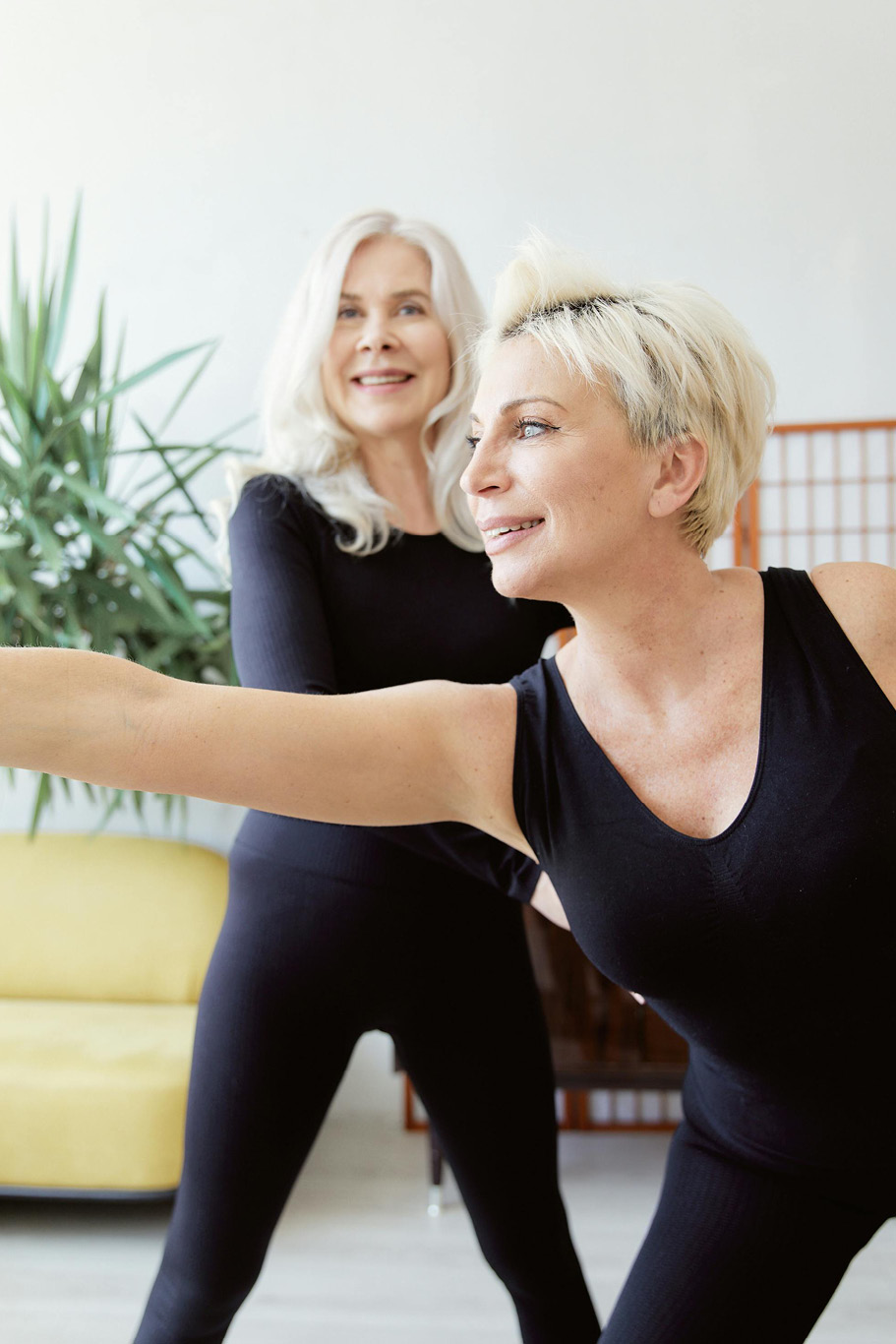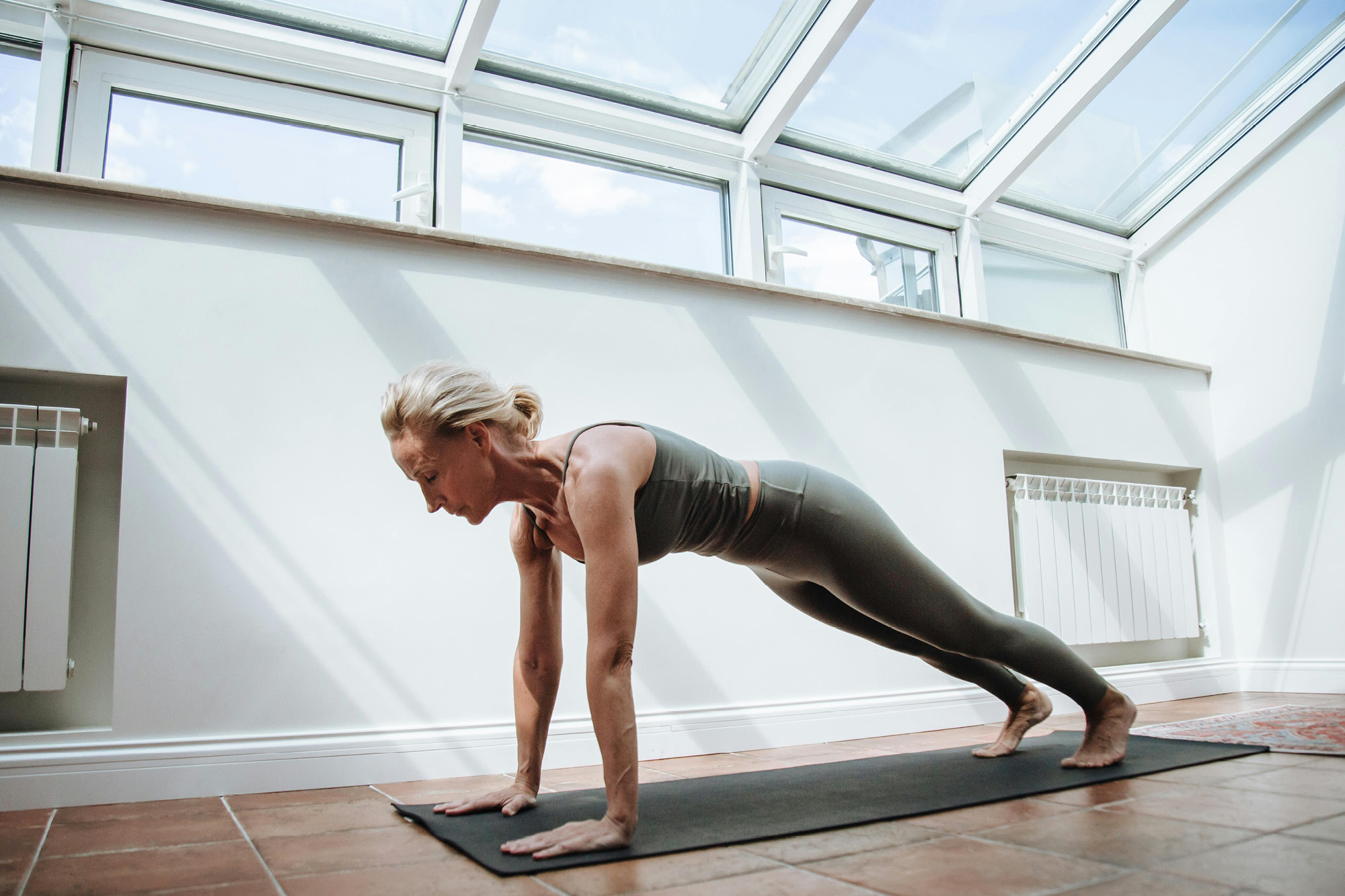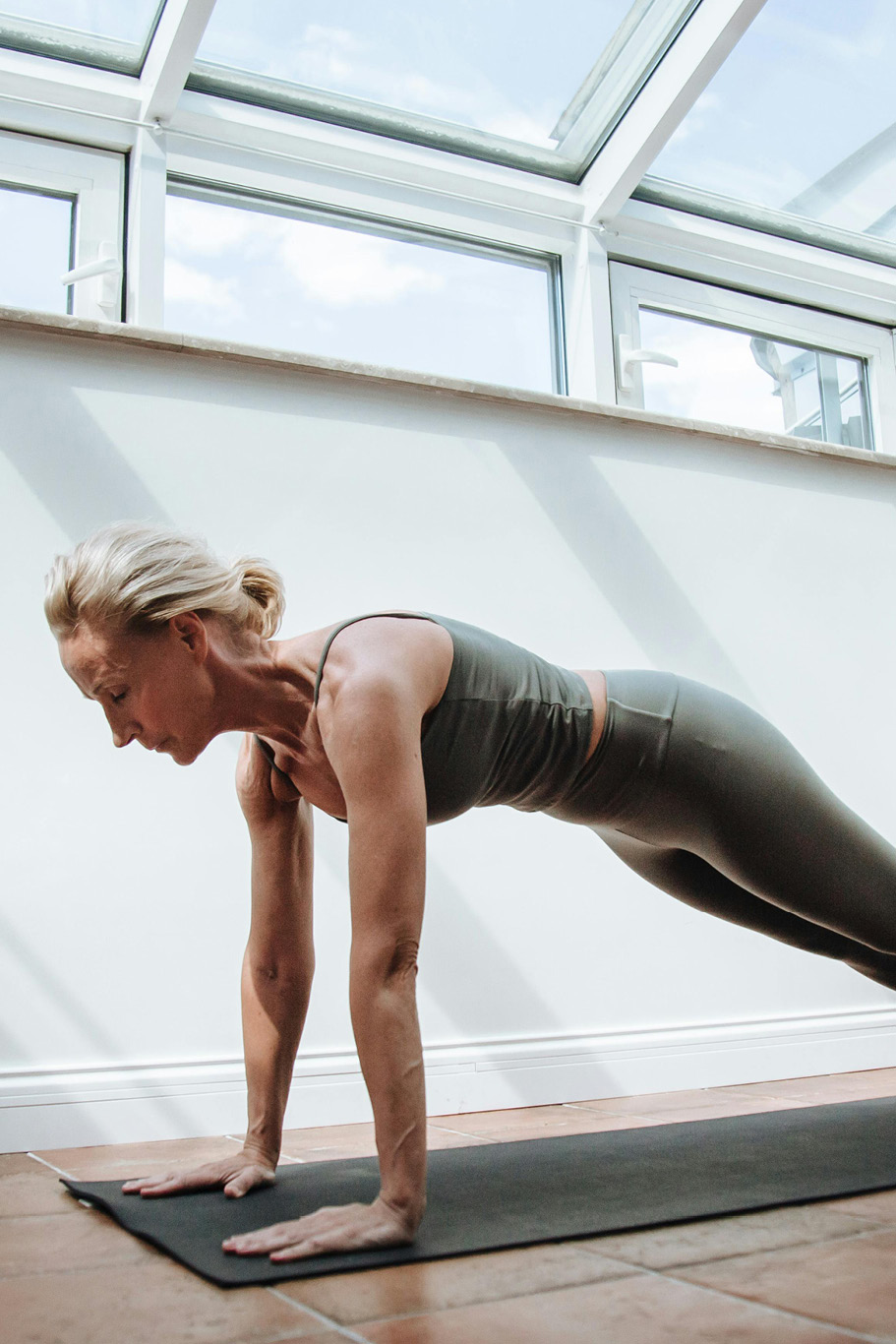My relationship with movement is imperfect and not without resistance. If I were to start at the beginning, it would be somewhere in the 90’s when life was easy and I didn’t yet know to be scared to fail or look awkward. As a child, I was constantly learning new things. The world around me was a playground of sensory experiences and I confidently moved through the days, processing and repeating until what was once new became part of what I know and what I can do. I moved and played, always attempting new physical feats without fear. I would fall, get banged up and bruised, and then get right back up and try again. Then came the teenage years and with it, a double rainbow of human emotions: self-doubt, fear, humility, excitement, nerves. The stakes were higher and trying new things felt slightly more terrifying. For some people, these emotions act as a motivator; a reason to train harder, become stronger, and run faster. Others accept them as an unmovable roadblock; a reason not to try that hard. It was this latter attitude towards sports and movement that I carried with me into my adult life.
It’s not that I don’t like to move. I love to walk, hike, swim, and bike around the city. But my comfort zone doesn’t extend to any activity where I feel like I’m performing for an audience or have to keep pace with others around me. I decided long ago that group fitness classes just aren’t my thing. So, when I found myself working on a magazine that is quite literally all about the power of movement, I felt it was time to face my resistance. I resolved to keep an open mind, accepting that my thoughts and my body would undoubtedly feel awkward and uncomfortable at the start. Who knows, maybe I would be judged by the other people in the classes (I wasn’t). Maybe I would fall (I didn’t). Maybe I would accidentally kick the teacher in the face while attempting a new acrobatic move for the first time (I did and she was very cool about it.)
I spent the first week of my “movement journey” avoiding going to an actual fitness class. I rolled out my yoga mat on my apartment floor and occasionally stretched, practicing twists and Child’s Pose and kicking my feet in the air like I did as a kid. I played with yoga blocks in a creative rules don’t apply to me manner. I walked and biked to work—all in an attempt to add just a little bit more movement to my daily routine. And then, that Friday night, I went to my first class.

Aerial Yoga
Aerial yoga, also known as anti-gravity yoga, is a type of yoga that uses a hammock suspended from the ceiling (think ‘yoga swing’) to allow you to perform postures that you may not ordinarily be able to do on a yoga mat. It combines traditional yoga with movements inspired by acrobatics and dance. The only prerequisite is you must be comfortable upside down.
As this was my first fitness class in years, and the first of the aerial variety, I was anxious. When I arrived at the studio, the lights were dim, music played quietly, and there were no more than 10 hammocks in total, all hanging waist-length above thick mats resting on the shiny wood-paneled flooring. The class was full and I was not the only beginner (I was never the only beginner.) We warmed up by swaying with eyes closed in the hammock, worked through several inversions, including a sequence of movements that required me to extend my legs in the air, wrapping my feet around the taut silk fabric, and trust fall forward until I was fully upside down. I carefully moved through the steps and found myself without fear as I swung towards the mat beneath me, my hair grazing the floor. I let go of the fabric and swung in small circles, blood rushing to my head. I felt dizzy and calm and surprised that I didn’t struggle nearly as much as I thought I would. Walking away from that first class, I felt more at ease in my body and somehow taller.
During my second (and third and fourth and fifth) class, I instinctively found a spot in the front row close to the mirror. Seeing my reflection during one of the more challenging aerial movements, I felt simultaneously graceful and strong. But moments later, my hip collapsed and I struggled to keep the pose, reverting back to clumsy. One of the last tricks we practiced required strategic placement of the silks before front-flipping into the safety net of the hammock. Essentially, following the steps: one, wear the hammock like a shawl; two, grab a handful of fabric keeping your thumbs pointing in; three, maneuver your arms like a chicken until they are wrapped tightly in fabric; and finally, four, trust that you did all of the above correctly, throw caution to the wind, and fling yourself forward towards the floor. Afraid of injury, I waited until the teacher made her way through spotting the rest of the class to my end of the room. “Okay good, now flip,” she said after looking at my setup. “On my own?” I questioned nervously. But then my body performed the actions before my mind had a chance to stop it. I found myself successfully cradled in the hammock. “See, you don’t need my help.” A boost of confidence to my inner Cirque performer.

Ballet
The Saturday morning Ballet Intro class at Vancouver’s popular Harbour Dance Centre focuses on building a foundation, clean technique, and proper alignment with barre exercises, combinations across the floor, and adagio taught to live piano accompaniment. And it happened to be my first dance class—ever.
I knew it was unrealistic to think that I would be able to drop into a ballet class for the first time and gracefully pirouette across the room, but those are the kind of expectations I set for myself. I tried to come prepared. I did what any perfectly rational person would do and searched ballet tutorial videos on YouTube so that I could have the foundational knowledge I needed to feel good walking into the introductory-level class. I dressed in leggings and light pink socks with my hair in a tight bun, trying my best to look the part of a “dancer.” When I arrived at the class, I was surprised at how many people were packed in the small sign-in area. Even more surprising was how many appeared to be experienced ballet dancers wearing worn-in satin pointe shoes. Wasn’t this a beginner class?
I found a spot in the back of the brightly lit studio, feeling like I was stumbling in the way of everyone else who, it seemed, knew where they were going and what they were doing. Before class started, the teacher gathered the new students (there were five of us) in a small circle and quickly went over the structure of the class. “There will be many variations, so go at your own pace,” she told us. “Focus on learning how to move your feet. Don’t worry about your arms in your first class.” I immediately worried about my arms.
We spent the first hour on barre, the pace of the choreography moving very quickly from simple to complex. I struggled as we progressed. The teacher stopped nearby, for a moment resting her hands on the shoulders of an older woman beside me and gently pushing down, smiling as she cooed the words, “Remember to relax.” The woman smiled back, and with a deep exhale, she softly melted. I softened a little bit too. With my left hand on the barre, I followed along, mirroring the movements of a man on the window side of the studio who not only knew all of the choreography, but performed every sequence beautifully. My feet and arms did not always move in the same way as his, but I didn’t feel completely lost.
After an hour of barre exercises, we began centre practice (a group exercise with movements similar to those on the barre but performed in the centre of the room.) I began missing steps completely and turning off cue to the sounds of the creaking floor and pacing breaths of the other dancers. I repeated the 1-2-3 count in my head, dodging the ones who moved in the correct sequences around me. I felt uncoordinated and clumsy, but not discouraged. At one point, the teacher linked her arm in mine and walked me through the steps a few times, encouraging me to not overthink it and just let my feet move in whatever way felt right. Next came a combination of movements ending in a pirouette. The man who danced beautifully caught me watching the teacher nervously as she went through the steps at a speed that I couldn’t quite keep up with. He smiled gently in my direction and in a reassuring voice, told me, “There’s no pressure to pirouette. Take your time. There’s always time.”

Boxing
All-City Athletics is a local underground boxing studio located in Vancouver’s Gastown neighbourhood. The 9:30 am Saturday morning Boxing 101 class, taught by co-owner and instructor Jordan Bowers, is a slower paced class that focuses on the basics of boxing: cardio, combinations, simple footwork, and getting comfortable wearing the gloves and pads. It falls just over the halfway point on the intensity-scale, and full disclosure, most things I do fall on the lower half of that scale.
I was hesitant to go to a boxing class. My resistance felt different from the other classes I had tried. Without knowing what it looked like to belong there, I felt like I didn’t. Maybe I wasn’t tough enough. Petite in size, I felt I at least looked the part to be in a ballet class or practicing aerial yoga, even if I didn’t always have the skills to match. Though my life experiences prove I’m tough on the inside, I don’t always feel that way on the outside.
The morning of my introduction to the sport of boxing, I woke up hours before my alarm, wired and restless in the same way as before an early flight I’m afraid to miss. It was pouring rain and by the time I made it to the All-City Athletics entrance, I was soaked, tired, nervous, and a little bit grumpy. A young staff member helped me wrap my hands and I noticed about four others getting their hands wrapped by other staff and instructors. Like every other class I had taken, I wasn’t the only one there for the first time. The studio was very dark, with only lighting from a neon sign and deep red bulbs. The energy was high from start to finish. We started with cardio before moving quickly into choreographed footwork and combinations. “Always keep your hands in front of your face,” said Jordan, adding encouraging things like “nice jab… good footwork.” Adrenaline kicked in early on and carried me through the rest of the class. The girl directly in front of me was experienced and intense in her movements; I mirrored her when I wasn’t sure what to do. We spent most of the class partnered up, practicing combinations and blocking, and ended with practicing rapid-fire jabs on the heavy bag.
Spending an hour punching the air, punching pads, punching a bag, and moving from foot-to-foot around the studio left me sweaty, exhausted, and, to my surprise, feeling extremely accomplished. I smiled the most during this class—at the things I did right and at the things I did wrong. It was still pouring rain when I stepped back out into the alley, but I welcomed it this time. In just under an hour, my mood had completely shifted. I was stronger and ready for anything.
.
Some people have an athlete’s confidence built in; an aerialist’s lack of fear, a dancer’s ease in their body, a fighter’s unmoving determination. These things don’t come naturally to me. I’m not a disciplined ballerina. I’m not a graceful aerial silks performer. I’m not a strong fighter. But these communities that seemed so intimidating from the outside, were nothing but supportive and welcoming on the inside.
It’s true that the stakes of trying new things are higher as an adult. I’ve become aware of who I am and what I can and can’t do—or at least what I think I can and can’t do. Trying new forms of movement were accompanied by feelings of anxiousness and awkwardness. Throwing myself into something completely unfamiliar meant risking looking out of place—something I had been avoiding as much as possible since I was a teenager. But what I realized is that if I didn’t push past my resistance, I wouldn’t have made it to all the good things. Aerial yoga gave me confidence that I could be naturally good at something completely unexpected. Ballet reminded me that my body moves with more ease when I’m not overthinking the steps. And boxing left me with newfound strength and energy.
There was a satisfaction that came from moving in these new ways, a unique feeling that I’ve only ever felt after trying a new form of movement. That feeling was there the first time I successfully popped up on a surfboard, and it’s there every time I reach the summit at the end of a challenging hiking trail. It was there when I did my first inversion in aerial yoga, when I first performed a sequence correctly on barre, and when I made direct contact with a jab, glove-to-pad—all three things now part of what I know and what I can do.


